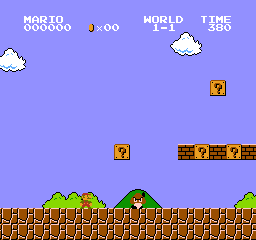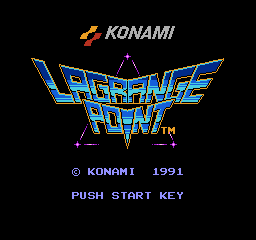This article requires some knowledge of oscillation for producing sound. I’ll also confess that determining what chiptune sounds good requires an appreciation for them.
In my opinion, the Nintendo Entertainment System is the first video game console to feature games that have gameplay that still holds up to today. People still play NES for their playbility rather than solely their nostalgia factor. Older consoles like the Atari 2600 featured very simplistic games that gamers only play today for nostalgic reasons. Those who didn’t grow up with the Atari console don’t find any meaning in them.
I’m not sure if I mentioned this before on my blog, but I have an incredibly soft spot for chiptunes. There’s a charm to pushing these chips that can only make simple sounds to their limits to create a beautiful piece of music. I enjoy melodic music and what other than video games have solid and consistent melodies? There are some composers that I consider magicians because they make songs so deep that you’d put it in a club.
The NES APU, the sound chip in the NES, is what generates the simple tones to create music and sound through the console. Quality was lukewarm with the original Famicom and NES that outputed sound and video through a single coaxial cable. Eventually, a composite output was added providing a purer sound, though it was mono only despite many artists writing stereophonic music. Certain enthusiasts build mods to extract both channels.
There was five channels on the APU. Two pulse-wave (square) channels with four pulse-width settings in addition to a triangle channel. A random noise generator. Finally, a PCM for playing samples, although low-quality due to memory limitations.
I’ll give a basic explanation of how most games used these channels though some artists were more creative with their use. The two pulse channels supported the main melody, one was the main one and the other supported it (say with a slightly different pitch). The triangle channel was used to add bass. Finally, the noise channel was used for percussion.
Additional sound chips were used in cartridges that added extra channels or FM synthesis. I will talk about a few of these later but won’t cover all of them since there’s quite a few. I’ll go through some games that use them. Unfortunately, the sound chips could only be used on the Japanese Famicom since the NES didn’t have the sound passthrough through the cartridge slot. American ports of these games had to make shift with use of the available 5 channels and often the game sounded more muddled in comparison to their Japanese counterparts.
I want to take a dive into a few a games that have music that I consider ‘masterpieces’. There’s no real criteria other than my subjective tastes. Many won’t agree with me but I’m sure it will be appreciated by those who love ‘old things’. I hope you enjoy a few tunes and the order is set by my preference.
Super Mario Bros.
The overworld theme in Super Mario Brothers isn’t something I would consider a masterpiece. However, it’s such a classic that I felt that I had to include it here. There’s not much to comment about, it uses channels in the same way that most games do. Virtually everyone has heard some version of this song and I would consider it the prime example of chiptune.
Some noticed that parts of the music would be interrupted while jumping. It’s because all five channels were used for the music and nothing was left for sound. The sound effect would take place of one of the square wave channels so that it could play.
Mega Man 2
I would best describe Mega Man 2’s music as the ‘traditional’ sound of the NES. No special techniques are used for production, no intense melodies; just music that perfectly fits the atmosphere and theme of the level or the situation.
The boss of the stage, Quick Man, uses electricity as his weapon therefore the music has an electric sound to it. The music also plays at a faster tempo because of Quick Man was quicker than other bosses in the battle.
Mega Man 2 is an excellent example that simple music can still sound pleasant without the input of a master who knows every limitation of the chip and instead used it traditionally. Mega Man 2 uses the typical channel setup that was mentioned above for producing melody and beat.
One interesting fact about the composer’s goal was to create very simple melodies only composed of a few notes. The idea was to make catchy songs that were almost as simple as a pop song with a similar structure.
Silver Surfer
Tim Follin is probably the composer with the worst luck. He pushed soundchips to their limits making some amazing pieces except there was one caveat, the games he was contracted for were absolutely terrible.
Silver Surfer was torn apart more than a decade ago by The Angry Video Game Nerd. It sent him into a fit of endless cursing and swearing. However, he oddly didn’t comment on the amazing music in the game. Maybe he was too distracted by the awful gameplay.
The insanely fast paced music almost sounded something that would come out of the SID Chip on the Commodore 64. It was demoscene quality to be honest. He even managed to produce a convincing electric guitar sound.
The kick sound isn’t created with the usual DPCM sample like done in most games. Instead the triangle channel is with a pitch change is used to create a quick thump. He uses the same channel for the kick but what really showed that Tim Follin was a master at his art is that the two never played at the same time. It required quite a bit of creative production to never have them clash.
I really want to highlight how bad his luck is. Imagine being the composer for a Pictionary game, I’m sure you’d write something atmospheric and melow. Instead, Follin decided to compose something that would fit an Action-Adventure game where you’d be saving the galaxy from mutant aliens.
This is unusually intense for a board game but perhaps this was to make up for the boring nature of the game. I wonder what kind of music we’d end up with if he was composing for Chess Master.
Admittedly, Tim Follin confesses that he often didn’t compose music to follow the theme of the game but rather see what he could do with the limitations of the sound chip. That might explain the situation with Pictionary.
Journey to Silius
If any game completely broke the rules on the traditional method of using channels, it’s Journey to Silius. The artists did an amazing job of creating something that sounded so much fuller than the average NES game. The bass was stronger, the melodies more engaging and a beat that sounded completely different.
The two pulse channels were still used for the melody but instead of using the noise channel for the drums only, they combined the noise and triangle channels to create a very realistic sounding drum. This was because attack was done with the noise channel and decay using the triangle channel. However, the stroke of genius was using the traditionally unused DPCM sample channel for the bass. The samples used for the bass are pretty high quality and provide for that deep sound we crave when listening to music.
Castlevania 3
The music between the American and Japanese Castlevania sound completely different. This is due to the use of a chip VRC6 which adds two square wave channels (pulse) and one sawtooth channel. It’s not secret that having additional channels creates for a deeper sound and this is definitely the case for Akumajou Densetsu. There’s not much to comment other than to listen.
It’s quite obvious that the American version sounds much more dull. The artists didn’t really use any creative techniques to make up for the missing VRC6 chip. Instead, they used the typical arrangement using channels to generate beat and melody. It’s a bit disappointing.
Lagrange Point
Lagrange Point doesn’t sound like any NES game in existence. Rather than primitive sounds, we hear a pleasant and smooth track being played. This is due to the use of a special chip, the VRC7, which adds 6 channels of FM Synthesis. The sound produced ends up reaching 16-bit territory.
I won’t go into detail of what FM Synthesis is because I’m leaving that for another blog post. However, it can be noted that the VRC7 is used exclusively for the music while all other sounds effects are still done with the NES APU. The contrast between the two sounds is a bit jarring in my opinion and generates a disjumbled mess of 8-bit and 16-bit sound. I have to admit it’s quite strange to see 8-bit graphics with 16-bit sound, it doesn’t feel right.
Gimmick!
This company is playing its magic tricks again. If anyone could make the 8-bit NES sound and look 16-bit, it would be Sunsoft. Wikipedia lists some of the amazing techniques to generate such beautiful graphics using mostly graphics tiling optimizations.
My favourite track is an unused one, Strange Memories of Death. It has all the elements of a good song, catchiness, good production, a rich sound and oddly a dark undertone which flows really smoothly.
Gimmick was the only game to use the Sunsoft FME-7 chip which contained the Sunsoft 5B. It contained extra channels which the game used mostly to produce more bass (similar to Journey to Silius). Interestingly, the game didn’t make use of all the channels of the chip neither were all the features such as noise. It’s also the only game that uses the chip.
I put Gimmick! last on this list because it’s my favourite soundtrack on the NES. It spans multiple genres and sounds like a mix of different video game music styles. Apparently, this is what the artist intended. It has a rich deep sound unparalleled by any other NES game and I bet the bass would sound nice on a decent set of speakers or headphones.
Conclusion
This was just a small sampler of some of the good music that is on the NES. I haven’t played that many NES games and had to find other ways to discover interesting music. There’s a lot to listen to on grad1u52’s YouTube channel though unfortunately they add a reverb effect to the music which puts it further away from the original.
Chiptunes are an acquired taste for most people who are used to pop but I consider those to be simple music as well. I have shared with peers these songs and they have found them interesting but it didn’t light them up. It was just something that sounded different to them.
My next writing adventure will be about FM Synthesis which is my favourite way of generating sound. Most focus will be on the Yamaha YM2612 in the Sega Genesis and perhaps the OPL2 from the AdLib PC sound card.
If you have your favourites on the console, feel free to share them. Other kinds of chiptunes are welcome in the comments section below.
















